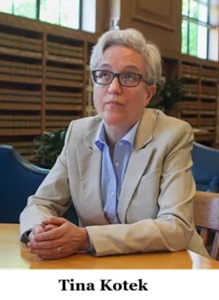Collaboration with NVIDIA announced alongside $10 million investment
Governor Tina Kotek announced a $10 million investment in artificial intelligence (AI) workforce development alongside a new
Memorandum of Understanding (MOU) between the State of Oregon and NVIDIA to expand AI education and skill-building.
“AI is transforming the way we live and work, and Oregon should not be left behind,” Governor Kotek said. “This collaboration with NVIDIA helps us meet the moment. Oregon will not only prepare our workers, businesses, and public service professionals for a prosperous future, we will lead the way.”
“AI has ushered in a new industrial revolution, and governments, educators and partners are racing to shape a world where everyone can thrive through technology and AI training,” said Louis Stewart, Head of Strategic Initiatives at NVIDIA. “Through this new collaboration, Oregon will have access to the NVIDIA technologies it needs to upskill and empower its workforce to innovate, compete and grow its economy.”
The MOU establishes a collaborative framework for Oregon and NVIDIA to foster entrepreneurship, expand AI-focused education and skill-building to prepare Oregonians for the future, and help state agencies identify ways to responsibly use AI to improve government services.
The initiative is to collaborate with Oregon’s higher education institutions to develop a comprehensive AI training programs to equip
students with practical skills in AI, machine learning, and data science; and facilitate hands-on learning experiences about NVIDIA’s cutting-edge technologies. The MOU mentions AI frameworks and
simulation tools, with a specific focus on applications in semiconductor design, microelectronics, and renewable energy solutions, which will be new for NVIDIA. Their expertise has been in gaming and graphics.
Included in the objectives, there is mention of:
- Advance Oregon’s economic competitiveness and global leadership in industries like renewable energy, smart cities, and precision agriculture.
- Focus on addressing challenges in climate resilience,
healthcare analytics, renewable energy optimization, and smart city infrastructure while ensuring Oregon remains a
leader in AI innovation.
- Ensure these programs center the needs of and prioritize
accessibility for underserved and rural communities to create equitable workforce development opportunities.
- Engage a diverse set of stakeholders—including academic institutions,
businesses, startups, and community organizations—to ensure equitable access to AI education, resources, and
technologies.
As part of the collaboration, NVIDIA will work with the Higher Education Coordinating Commission (HECC) and Oregon’s colleges and universities to launch an AI Ambassador Program, which will place trained ambassadors across Oregon campuses to provide hands-on training and mentorship to students. The work will be overseen by a steering committee composed of state and industry representatives.
A D V E R T I S E M E N T

A D V E R T I S E M E N T
“We are excited for this strategic collaboration with NVIDIA that will help position Oregon higher education institutions and workforce training providers to lead in preparing students for responsible application of AI and cutting-edge technologies needed in Oregon,” HECC Director Ben Cannon said. “This highly collaborative and tailored approach to training, innovation and research for some of the most high-demand fields in Oregon is designed to drive economic growth and open doors for diverse Oregonians to high-paying careers.”
A metrics for workforce development is keyed on the percentage increase in participation from underrepresented groups, including rural and economically disadvantaged populations. Outcome measurements include enrollment rates in these programs, with data on participation from underrepresented groups, the number of scholarships or financial aid opportunities provided to economically disadvantaged students pursuing AI-related programs, and the increase in participation rates of individuals from underrepresented groups in Oregon’s AI education and workforce initiatives.
Alongside the MOU, the Governor is directing $10 million in available
Oregon CHIPS Act funding to Oregon’s Semiconductor Talent Sustaining Fund, established in 2023 in
Senate Bill 4. SB 4 limits the Governor’s discretion to $50,000 for a single grant with preferences given to businesses owned by members of underrepresented communities and economically disadvantaged individuals.
Oregon House passed the $210 million Oregon CHIPS Act, which includes $190 million in direct grants and loans for semiconductor companies seeking federal funding to expand in Oregon, as well as $10 million for research at universities and $10 million to help with land development costs. Furthermore, the U.S. Commerce Department is releasing federal CHIPS Act funding in stages, and Oregon is expected to receive more of the billions in yet-to-be-distributed funds, if they clean up their act.
The MOU obligates Oregon to provide sustained investment in modernizing research facilities, encourage expansion, and fostering AI innovation hubs to ensure Oregon institutions remain globally competitive. "The investment will support workforce development projects tied to semiconductor and AI sectors, with a focus on training Oregonians – especially those from underrepresented communities – for high paying careers."
Instead of revising policies that don't meet new standards, it seems like Governor Kotek is playing double-dare with the Trump Administration at every turn. Oregonians are disenfranchised over socialist policies that discriminate picking winners and losers. Let
Governor Kotek know how you feel.
--Donna Bleiler| Post Date: 2025-04-25 15:47:37 | Last Update: 2025-04-25 17:58:15 |







